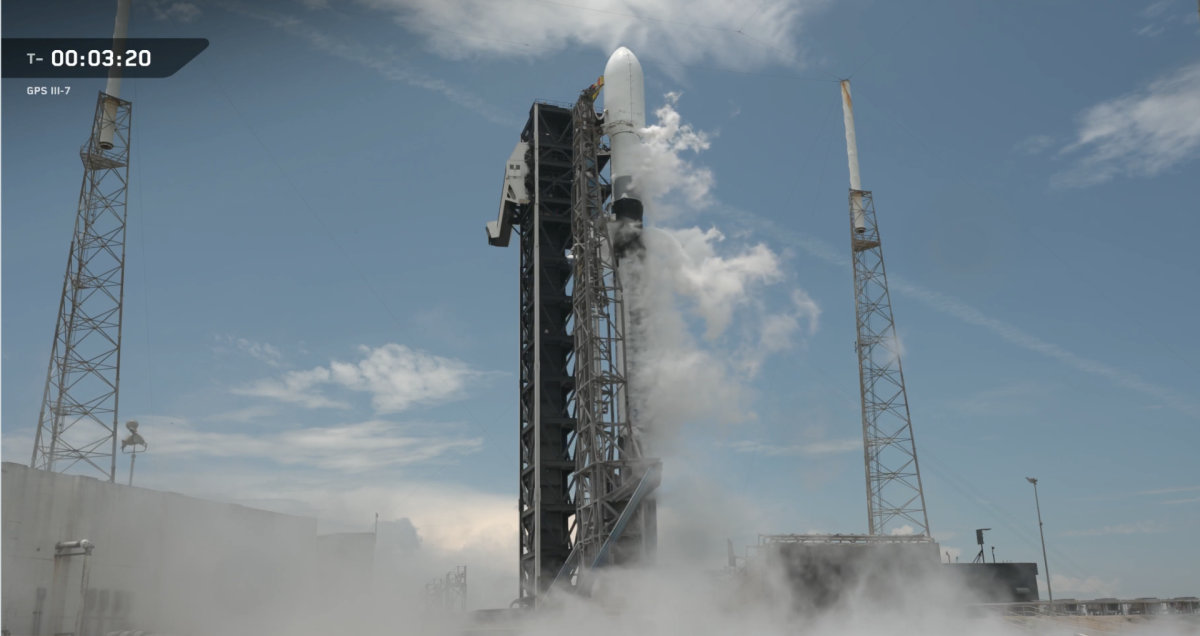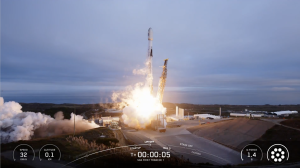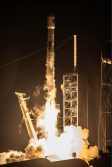Space Force launches second ‘rapid-response’ GPS mission

The Space Force successfully launched a Global Positioning System satellite on Friday — marking the second instance the service has demonstrated its ability to quickly put a GPS space vehicle into orbit in a fraction of the usual time.
The GPS III SV-08 was launched via a SpaceX Falcon 9 rocket from Cape Canaveral Space Force Station in Florida. It’s the eighth space vehicle for the GPS III constellation to go on orbit. The series of satellites, built by prime contractor Lockheed Martin, brings significant improvements over previous GPS constellations by offering greater accuracy and advanced anti-jamming capabilities for military users.
Notably, the Space Force was able to execute the mission just three months after the service notified both Lockheed Martin and SpaceX to prepare for liftoff — a much faster pace than traditional national security launches, which could take up to two years from the initial contract award, said Walt Lauderdale, mission director and chief of Falcon systems and operations at Space Systems Command.
“The volume of data for the Falcon launch system allows us to focus our attention on the most critical areas and confirm acceptable flight risk,” Lauderdale said earlier this week during a media roundtable ahead of Friday’s launch. “This experience over time allows us to leverage SpaceX’s commercial tempo, optimize our own review timelines and utilize previously flown hardware — as with our last GPS III launch.”
Friday’s mission marks the second GPS III launch executed under what the Space Force calls a “rapid-response” schedule, demonstrating the ability to prepare and deploy a satellite on a rushed deadline. In December 2024, the service conducted a secretive mission dubbed Rapid Response Trailblazer that saw the seventh GPS III satellite go into orbit onboard a SpaceX Falcon 9 after five months of planning.
Work conducted during the Rapid Response Trailblazer mission and other previous GPS III launches allowed the Space Force to streamline Friday’s launch even more because most of the mission profile and analysis for launch was already completed, Lauderdale said.
“The ability to once again demonstrate a quick-turn launch of crucial capability helps us understand the key aspects that enable such a capability and further prepare for similar mission timelines in the future,” he said.
With adversary advancements in the space domain putting more demand on the Space Force, the service is exploring ways to increase the resiliency of its constellations. While one method has been proliferating large numbers of satellites on orbit to add redundancy, the Space Force also wants to reduce the time it takes to put new systems in space.
One such effort is SSC’s Victus mission series under the Tactically Responsive Space program, which focuses on launching small payloads on commercial rockets with only 24 hours notice. While the recent pair of rapid GPS III missions are separate from Tactically Responsive Space and are geared towards payloads in the National Security Space Launch-class, the efforts share a common goal of reducing overall launch cadence.
“We’re trying to prove that we can quickly respond to an on-orbit failure of a vehicle, but we’re also trying to show the best ways to be resilient,” Col. Andrew Menschner, Mission Delta 31 commander, told reporters Wednesday. “Now that we have the timelines of launch headed to much shorter durations, one form of resilience is having a completed vehicle in the factory and ready to go to respond. Said another way: We don’t always have to have a vehicle on orbit for it to be providing resilience in the constellation.”
The Space Force initially planned to launch the eighth GPS III satellite onboard one of United Launch Alliance’s (ULA) Vulcan rockets later in 2025. However, the service announced in April that it would pivot to using a SpaceX Falcon 9 in order to get critical capabilities on GPS III — such as the jam-resistant M-code signal — on orbit faster, Lauderdale said.
“What we’re doing this time is, we’re trying to make sure that we address getting some M-code capability up, and it was an opportunity to work with SpaceX and ULA to make sure we are equipped among all the parties and make sure that we could balance making sure that we can get M-code up there while taking care of both of the companies,” he said.
Menschner noted that because the GPS III satellites are qualified for multiple launch vehicle providers, it provided additional flexibility to switch to the Falcon 9 — a lesson that Mission Delta 31 is passing to others across the Space Force and Pentagon.
Moving forward, Lauderdale said he expects that lessons from the GPS III missions will open doors for other NSSL launches on faster timelines.
“So what we’re proving out with our GPS teammates shows the capability and capacity that we could do from the NSSL program. Multiple launch vehicles gives us assured access to space,” he said. “And so when we look the future, what we’re demonstrating here is that it is possible, with our current vehicle systems, that if there is a need to get something on orbit quickly, something that is unpredicted at the time we put it under contract, we have a capacity, and we know what it would take in order to make that happen.”
The remaining two satellites for the GPS III series are currently slated to launch onboard ULA’s Vulcan rockets before the end of 2025.






